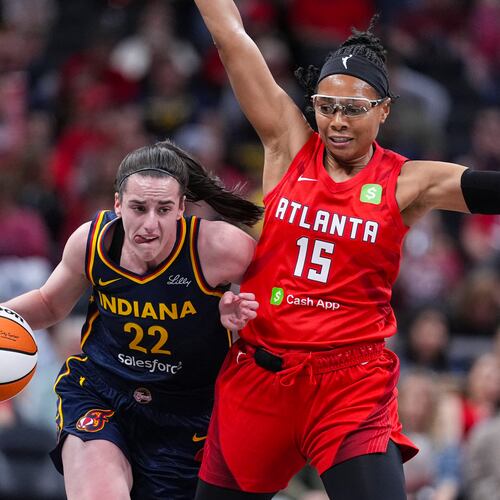The SEC’s spring meetings wrapped up Friday with a strong parting shot by conference commissioner Mike Slive.
He warned that the SEC would be prepared to pull out of NCAA Division I and form a new NCAA division if the five power conferences don’t receive autonomy to set their own rules on certain matters, including benefits for athletes.
The threat seemed to be aimed at the Division I board of directors, which is scheduled to vote in August on an autonomy plan for the 65 schools of the SEC, ACC, Big Ten, Big 12 and Pac-12.
“If it doesn’t pass, the next move would be to go to a ‘Division 4,’” Slive said. “It’s not something we want to do.”
But he made it clear the status quo is not an option for the SEC, which believes the NCAA’s current governance structure enables schools from smaller leagues to thwart the will of the major conferences.
“We want the ability to have autonomy in areas that have a nexus to the well-being of student-athletes,” Slive said. “I am somewhat optimistic it will pass, but if it doesn’t, our league would certainly want to move to a Division 4. My colleagues (in other power conferences), I can’t speak for anybody else, but I’d be surprised if they didn’t feel the same way.”
Slive said members of a new division would have the ability to create their own rules, just as schools in Divisions I, II and III currently do.
Even if in a new division, SEC teams would want to continue to participate in NCAA championship events, including the basketball tournament, with schools that remained in Division I, Slive said.
The push for autonomy grew out of the five wealthiest conferences’ frustration about the difficulty of getting their agendas passed by the full Division I membership. The failure to get approval for $2,000-per-year stipends for athletes, first proposed in 2011 but never enacted because small schools with lesser resources outnumber large schools with massive resources, exacerbated the tensions. There are 351 schools in Division I, each with one vote.
The restructuring move, not coincidentally, coincides with serious threats to college sports’ business model: a number of lawsuits by current and former athletes and a unionization effort at Northwestern.
The autonomy plan defines certain areas in which the five leagues could collectively chart their own course, including rules regarding financial aid, other benefits, transfers, insurance, coaching personnel and time demands on athletes. If the plan passes, SEC officials say their first priority would be to provide athletes with stipends that cover the difference between the value of a scholarship and the full cost of college attendance.
“We’re in a squeeze here,” Florida president Bernie Machen said Friday. “There are now six lawsuits that name our conference in them that specifically have to do with the whole cost of attendance.
“We would like to make changes, but we (haven’t) because the NCAA doesn’t allow us to. We’re really caught between a rock and a hard place. We desperately would like some flexibility. … The whole intercollegiate model is at risk if we don’t do something.”
An NCAA steering committee has recommended an autonomy proposal to the Division I board of directors, but the SEC wants to amend part of it before the August vote. The current proposal states that four of the five power conferences and two-thirds of their 65 schools would have to approve any rules changes before they could be enacted. The conferences want the thresholds lowered to three of the five leagues and 60 percent of the schools.
Slive said the thresholds need to be high enough to signal a “mandate” but not so high that change would be almost impossible.
He said the SEC hasn’t yet mapped out the details of a new NCAA division and hopes it doesn’t have to do so.
“I’m optimistic we’re not going to go to the Division 4,” Slive said, adding ominously, “If in August the board rejects the (autonomy plan), you should call me up.
“I do believe this is a historic moment. And if we don’t seize the moment, we are going to make a mistake.”
About the Author
Keep Reading
The Latest
Featured


